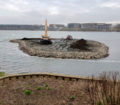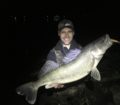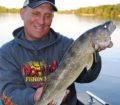By Steve Weisman
There is little doubt that we Americans have a love affair with the sun! Just think of all the activities that occur outside…gardening, mowing, golfing, hiking, biking, swimming, boating, fishing…the list goes on and on. Years ago, we thought very little about the effects of the sun. We worked and played in the sun, got our sunburns and our suntans.
Growing up on the farm back in the 50s and 60s, I spent a lot of time on the tractor with no hat on, no sunglasses. I thought it was pretty cool when my hair went blonde, and (I really didn’t burn) I got that golden tan. However, as I found out when I reached my mid to late 50s, I had paid the price for that sun worship.
I began to see changes in my skin and began to get blotches and blemishes that hadn’t been there before. So, with the encouragement of my wife I sought out the help of Dr. Gaul, board certified dermatologist from Spencer. Upon examination, Dr. Gaul determined that a lot of these were pre-cancerous Actinic Karatoses. Under a light, I could see how many pre-cancerous spots I had on my face.
Instead of trying to treat the spots individually, I was given a special medicated cream that I would put on my face twice daily for several days. During this time, the spots would look red, swollen, and scaly. However, by the time I was done and went back to Dr. Gaul, it had done its job.
Needless to say, I got quite a lecture about getting another chance, and the next time I might not be so lucky. I also did a little research and found data from the American Academy of Dermatology that one in five Americans will develop skin cancer in the course of a lifetime and 700,000 Americans develop squamous cell carcinoma each year.
Although I had been using sunscreen consistently for several years, I upped the protection to Sun Protection Factor of 50. An SPF of 50 will allow only about two percent of the UVB rays to reach the skin. Experts also recommend avoiding the hottest and brightest time of the day. However, those who work in the outdoors all day do not have that luxury. That’s where using sunscreen comes in.
Each year I have returned for a check-up and been fortunate to not have any other issues. During this time, I have learned to respect the power and the dangers of the sun.
In addition to the sunscreen, I have invested in UV protective shirts (certified UPF 50+) recommended by medical experts. I know that a lot of anglers now use the breathable long-sleeved UV protective shirts.
Head protection is also important with a wide brimmed hat recommended. If you choose to use a cap, then make sure to put lots of sunscreen on the ears, sides of the face and the neck area. It’s recommended to reapply every two to three hours to keep the protection at a maximum.
One area that often gets overlooked is the back of the hands. Make certain to protect them, too.
Don’t forget the eyes! A good pair of UV protection polarized wrap sunglasses provide the best protection.
While we’re at it, let’s talk a little about dehydration. This can easily occur when you get overexposed to the sun and do not drink enough water. It can easily sneak up on you. Medical experts note that the first signs of heat exhaustion are heavy sweating, the cold, pale and clammy skin, a fast/weak pulse, becoming nauseous, developing muscle cramps, feeling dizzy and contracting a headache.
The real key here is to keep hydrated with water, beginning early before getting out in the sun. Be sure to take breaks (preferably in the shade) and continue to drink water. Be especially careful when there is the combination of soaring temperatures, full sun, high humidity and a lack of air movement.
Really, safety in the summer revolves around common sense and being alert to the weather conditions. Enjoy the summer sun but be sure to make smart common-sense decisions.
















